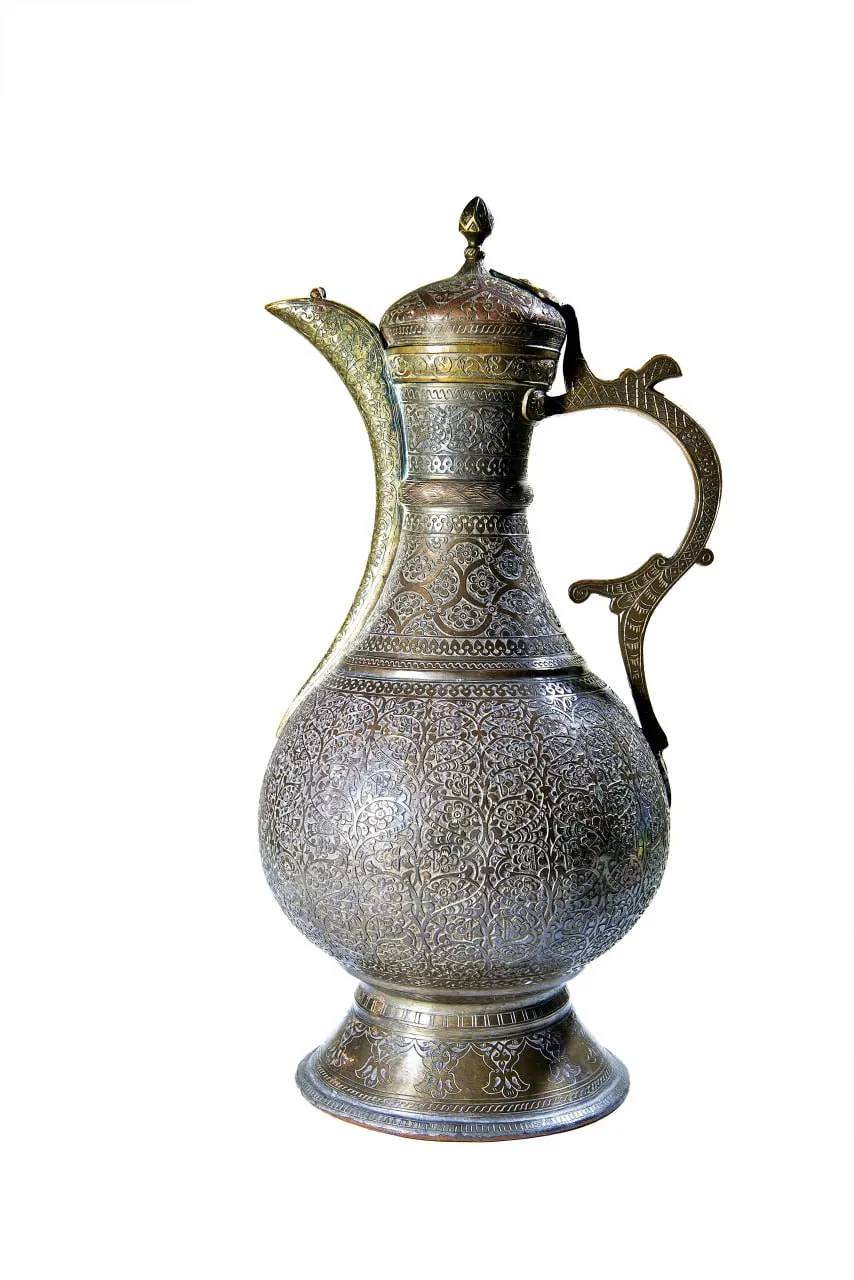The range of products was similar everywhere - kumgans and mischoynaks, shaped like porcelain teapots for tea leaves, oftoba and dastshui, deep bowls of kosa for liquid food, wide vessels of persimmon for storing honey and kuboposh - domed lids for food laid out on dishes, and tobacco dishes ( tavok), lali trays, hunting drums, bottles for aromatic oils and antimony, satyl buckets and much more.
However, in each craft center, these products differed somewhat in form and nature of ornamentation. Thus, kumgans, the most popular type of copper vessels in Bukhara and Samarkand, were mainly of two types: with an ovoid body, a low bottom and a long narrow neck, and with a body on a high pallet, flattened from the sides and having, like the throat, longitudinal edges; in Tashkent kumgans, the body of such a shape smoothly passes into a long and rather wide neck; Kokand kumgans are characterized by a spherical faceted shape.
Oftobs also differed in form. In Samarkand and Bukhara, the almost spherical body of the oftoba smoothly passes into a neck of medium height, widening slightly upward and having a domed lid connected by a hinge with a handle-bow. In Kokand, oftobs were made in a similar shape, but the whole vessel looked somewhat thicker and lower due to a lower bottom and a sharp transition from the body to the neck; the sides of the body were often chiselled into small bulges in the form of medallions, oval or polyhedral.In Tashkent, the egg-shaped body of the oftoba was squeezed from the sides and placed on the bottom of an average height. The Khorezm vessels were distinguished by a special originality: they were made with a pear-shaped body without a handle, a long narrow neck and a straight nose, curved at the end. A spout of this shape was obviously characteristic of earlier oftobs and other centers, like Bukhara.
You can learn more about this in the book-album "Collection of the Russian Museum of Ethnography" (Volume XIII) (St. Petersburg, Russia) from the series "Cultural legacy of Uzbekistan in the world collections".
The general sponsor of the project is the oilfield services company Eriell-Group

